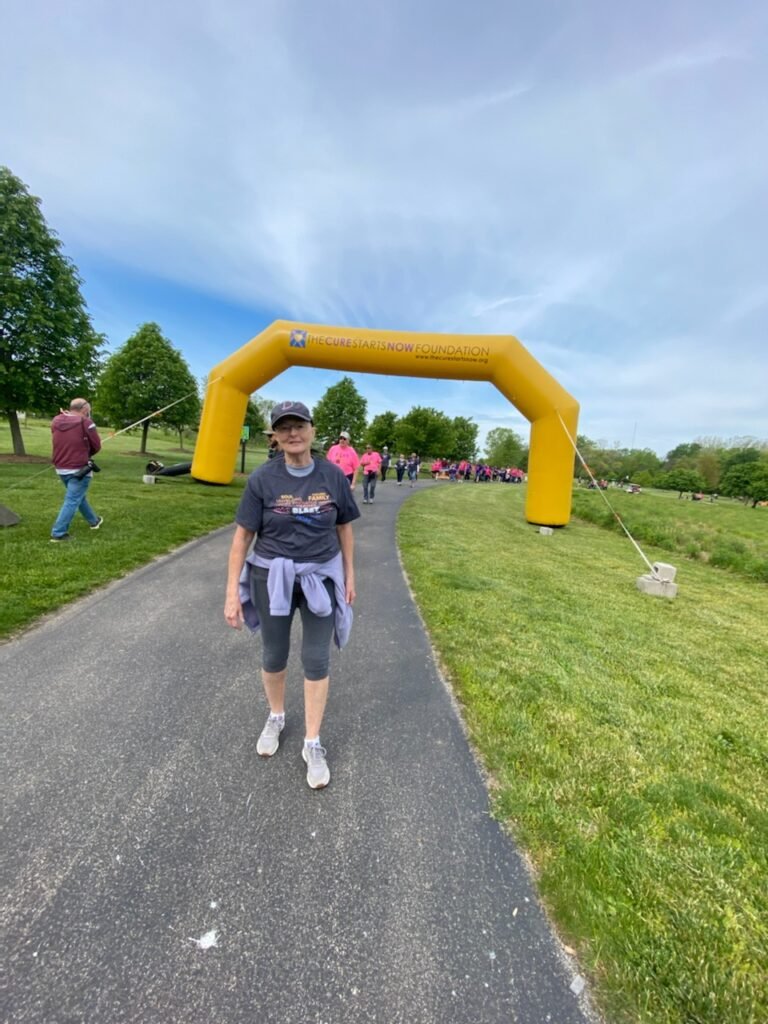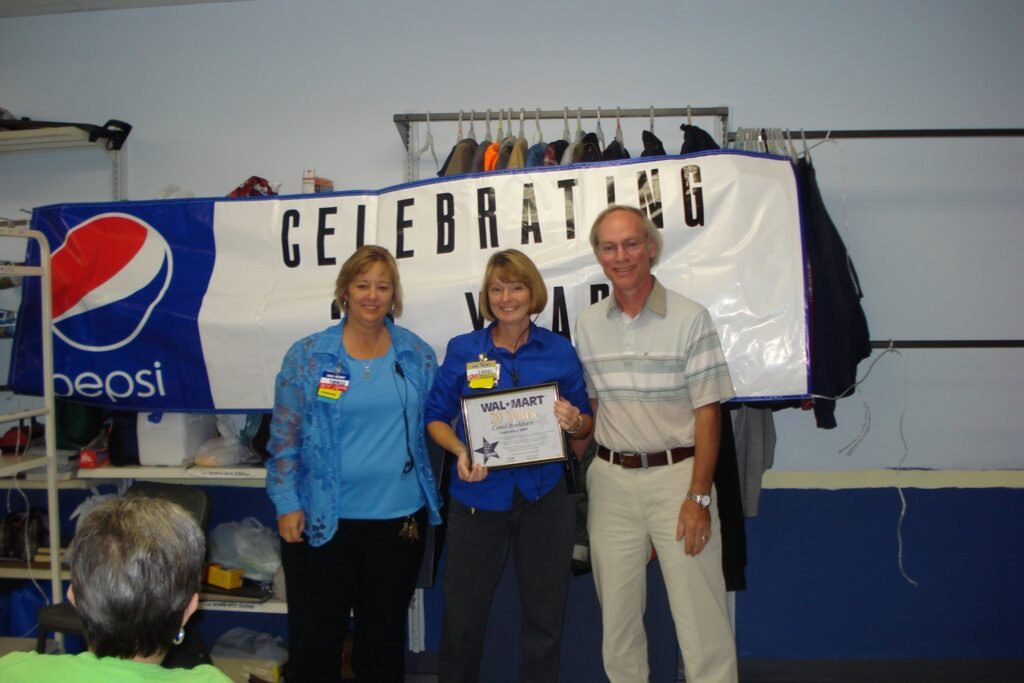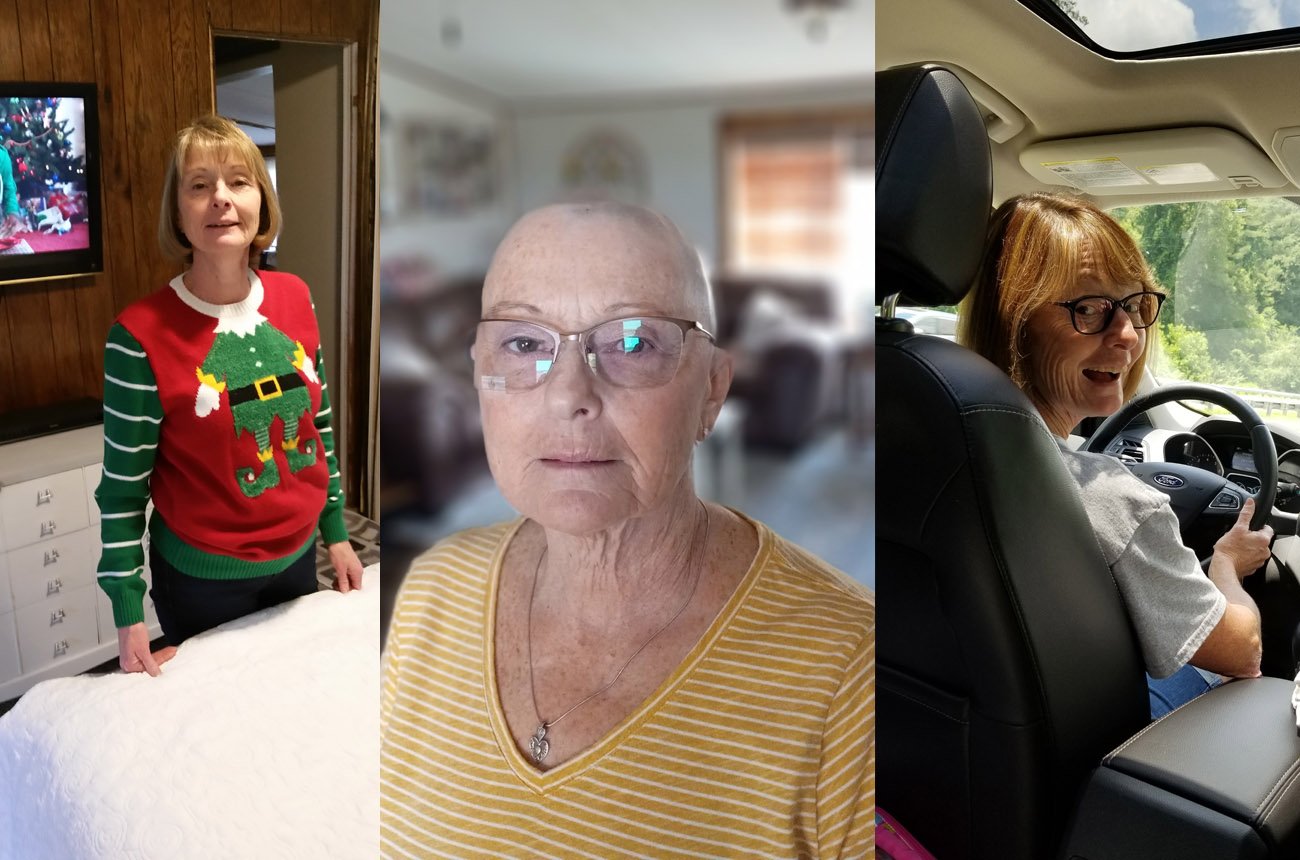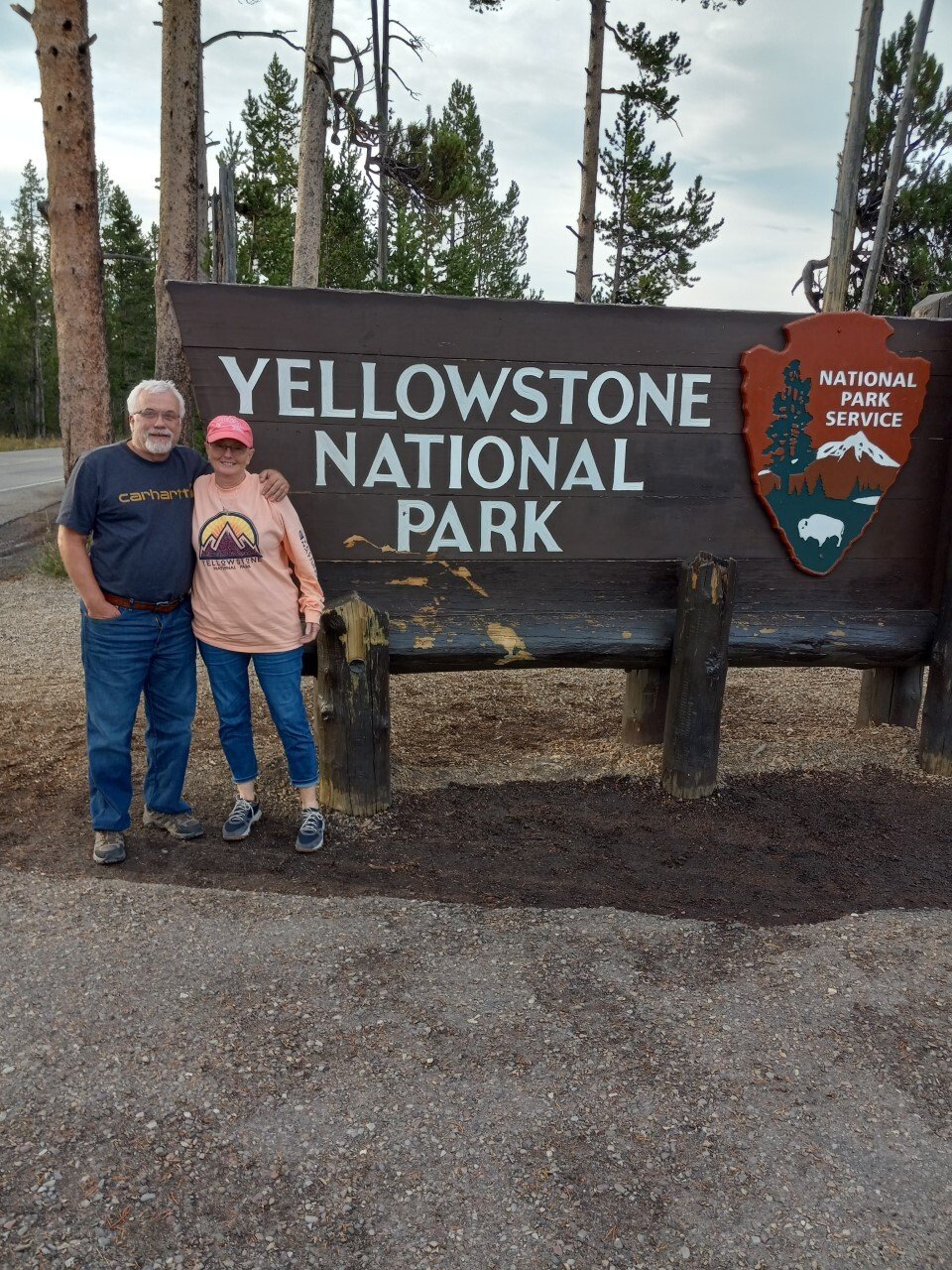Her face appeared on the screen a few minutes late. “I’m sorry, guys, I think I was in the wrong Zoom room, I don’t know”. No worries —I said— we are all used to the setbacks of online meetings.
We are (digitally) invading her living room and from time to time, her husband, Andrew, comes in and off camera in the background. He doesn’t seem to know we are around. It’s funny.
Here at this Indiana’s home, the atmosphere is simply authentic and welcoming – she transmits that sense of well-being that only very experienced moms convey. We talk a little about everything and nothing before jumping to the subject. Even through the screen, her hairless head cannot hide some scalp burns from the use of the Optune™ device, which reminds me she has a cancer story to tell.
Carol Burkhart was diagnosed with Glioblastoma multiforme (grade IV) during the early days of the coronavirus outbreak. For us, March 2020 represents the beginning of the pandemic; for her, the start of her cancer journey in the midst of an unprecedented world crisis.
When asked about the day she got diagnosed, the images seem to come quickly, blurry and heaped altogether into her mind. “I don’t remember every day there (the hospital),” Carol finally says.
Her memory often deceives her – dates and names are the worst. But no faces. The faces stay with her. As she speaks, Carol honors those nameless heroes, nurses, and doctors, that accompanied her on probably one of the worst days of her life.
The Fatigue of Uncertainty
“I woke up and I couldn’t see. My husband rushed me right into the hospital, and we were received by the greatest emergency nurse. But after trying to treat what I thought was an ear infection for about a month, she goes, «Oh no, this isn’t an ear infection. You have something», and that’s how it all started.”

Carol was no stranger to cancer. Her father had been diagnosed with prostate cancer, and her older brother died of melanoma when she was a senior in high school. She had been a lifelong cancer advocate, an active member of the cancer society and a regular attendee at fundraising rallies. But nothing prepared her to hear about her own diagnosis.
Emotional distress can manifest in many ways, and Carol’s took the form of a non-negotiable demand: I want the tumor out and want it out now. “I didn’t understand why we had to wait a week, why there had to be a biopsy. I just wanted it gone”.
Due to the recently implemented COVID-19 restrictions, she had to hear about her diagnosis alone. No person was allowed in the room. The only exception the hospital made was granted to her daughter-in-law, who happened to be a nurse. But that didn’t last either. All the measures were new and scary and, back then, simply inconceivable.
For Carol, everything felt so inconsiderate. “At first, I was just mad. I was like just let them come in here”. Unfortunately, the virus set the tone for how she and her family had to deal with an unimaginably painful situation.
Spending her hours surrounded by medical staff in personal protective equipment, she couldn’t help but constantly break down in tears, consumed by uncertainty and dismay. Every time her ICU nurse took her for a test, he covered her with a blanket so Carol didn’t have to witness all the COVID-19 panic happening outside her room.
This was one of the heroes without capes she mentioned to us at the very beginning: healthcare workers that, in the middle of frightening moments, were there to hold her hand or had the right comment to make everything more bearable.
“The most emotional part is that my son, my oldest one, the day we found out, he drove through the night and slept in the parking lot of the hospital because they wouldn’t let him in. I guess he was out there for three days and I didn’t know.”, she says in a broken voice.
Carol is the mother of two: Kenneth and Erik. Erik served as a ranger for 18 years in Iraq and Afghanistan.
According to a study1, 78.5% of cancer patients diagnosed in the early days of the pandemic felt that COVID-19 affected their treatment. The overcrowding of hospitals not only caused delays in diagnosis but also worsened the patients’ emotional support system.
“A gentle touch conveys more than a hundred words. Cancer patients need this more than anybody else”, the authors of the article conclude. In times when touching was literally banned, patients found themselves isolated, away from their families and stuck with increasingly distant medical staff.
Losing her job: the most painful blow
Before the scans, the Optune™, and all the doctor’s appointments, Carol was “always on the go.” She was the proud Assistant Manager at Walmart Retail Martinsville, and for over 30 years worked around 12 hours a day, five to six days a week.
She loved it there — loved her employees, the rush of efficiency, and the calm that came with delivering a good service. From the very first word exchange, you can pick it up: she’s an advocate of service.
Her disease took away one of her life’s most essential aspects: her career.
“I hated losing my career. I hated that they didn’t want to do anything with me wearing that machine (the Optune™), and they didn’t want to be responsible, which I never told them they would, but that’s how they felt (…) when they told me they wouldn’t do it, I was devastated, but… it’s ok now.”, Carol says with a hint of resignation even when she knows it was an injustice.
Naturally, a cancer diagnosis turns one’s life upside-down, but does it necessarily have to impact their career? Many patients manage to keep working while receiving therapy, and others are allowed to return to their activities once they finish with the more cumbersome part of the treatment. Either way, to work or not should always be the patient’s and their doctor’s decision.

“Under The Americans with Disabilities Act (also known as the “ADA”) and the Federal Rehabilitation Act, an employer cannot treat people differently from other workers in job-related activities because of their cancer history as long as they are qualified for the job”2.
If you think you are experiencing any type of employment discrimination because of your diagnosis, reach out to organizations like National Coalition for Cancer Survivorship, which has programs like Working It Out: Employment Rights in place.
Being such an active person, she had to find new ways to stay busy, feel valuable and keep any intrusive thoughts under control. Luckily enough, she soon discovered a new safe place where she was helpful and needed: her grandkids Lila, William and baby Collette.
She watches them twice a week and, in return, they fuel her with light and optimism.
“These days, I don’t think about having it so much. I just go on. Sometimes I even forget until I run into somebody new.”
An activist for positivity and collective sensitivity

Carol didn’t bring the Optune™* to the interview and, at some point, admitted feeling naked, scared to death, like that hour of break could cost her months of effort.
Although she tries not to complain, the truth is wearing the device “feels like carrying around a 20-pound kid”. Like us, she hopes for more medical options in the rather limited glioblastoma market (to date, only 4 drugs and one device have been approved by the FDA for the treatment of GBM).
In the same way, she advocates for further collective awareness and sensitivity, having been exposed many times to inappropriate and unsympathetic questions from people when they see the strips and the adhesive arrays that cover her shaved head.
“I don’t mind people asking about what it is if they are not guessing first and saying something ridiculous. I can be sarcastic, smart and delicate at times. I have a t-shirt that says “Optune, google it” because the questions that I get are more frustrating than anything. I had the nicest man come up to me at a restaurant, and he said, “Can I ask you what that is?”. That made my day because he asked me like a human.”
* The Optune™ is an FDA-approved wearable device for glioblastoma (GBM) that works by delivering focused Tumor Treating Fields (TTFields), which are electric fields that prevent cancer cell division (tumor recurrence) without increasing chemotherapy-related side effects.
Carol underwent two craniotomies, 12 months of chemotherapy, and 6 weeks of daily targeted radiation. Now, she gets MRIs every three months to anticipate any recurrence or progression. She is an unapologetic optimist.
“People ask me all the time if I am terrified. Yes, I am terrified, but I am also excited to believe in the treatment. As long as I get good scans, I have to believe it is working, whether it really is or not.”

At first, doctors assured her she would be blind in one or both eyes or that she would likely lose her memory. But, fighting all the odds, she didn’t lose a thing. So being the exception to the rule herself, she decides to put the statistics aside and trust, with all her heart, that her current treatment is keeping the tumor from growing again. “That’s what I tell people when they ask me, you have to believe it works.”
“I don’t like feeling like a victim. I like to be able to keep going.”
At the time this article was published, Carol was visiting Yellowstone National Park (USA) on a bucket list trip with her family.
5 Carol’s lessons on how to exercise empathy towards those with cancer
- Don’t rush conversations: Try to start a compassionate chat in which questions come naturally and don’t feel like a cold exchange of information.
- Measure the number of questions you throw at someone: this is a sensitive matter for the person, don’t bombard them with questions and pressure them to give information they might not feel comfortable sharing.
- Remember, there are people, not only a diagnosis: talk about a different subject for a change, sometimes people touched by cancer just want to keep on with their lives.
- Educate yourself: Unfortunately, in this case, there is such a thing as stupid questions, so think twice before saying something uninformed. In Carol’s words, GOOGLE IT!
- Don’t victimize them: Be careful when labeling cancer patients, as those labels can come at the expense of their true identities.
Glioblastoma in numbers (US)
According to the National Brain Tumor Society3, only in the United States, 13,100 people will receive a glioblastoma diagnosis in 2022 and another 10,000 will succumb to it.
“It’s just so weird how common this stuff has become around me. I mean, things I’d never seen like a good-good friend of ours, their little girl just got diagnosed, and I watched another friend of ours, and her husband just passed away from it. I’m like, I didn’t even know this was around until I got it”, Carol acknowledges.
GBM accounts for half of all primary malignant brain tumors, and it can occur in people of all ages, genres and backgrounds4.
To date, only 4 drugs and one device have been approved by the FDA for the treatment of GBM: lomustine, intravenous carmustine, carmustine wafer implants, bevacizumab (BVZ), and tumor treatment fields (TTFields) like the Optune™5.
Her impressions of the Together Against Glioblastoma group:
For her, the Together Against Glioblastoma platform, a Facebook group managed by Infusion 51a, is a reliable source of curated information. Beyond seeking support from fellow cancer patients, she sees this space as an opportunity to learn about new treatment options, read recently published research papers, and discover clinical trials being launched. She makes an active effort to stay up to date with all information about Glioblastoma, and the group makes it easier for her.
“I just love sites for information because you get so much false information. If I go and google stuff, most of the time, I get garbage.”
Sources
- 2021. Patni N, Hota A, Patni A, Misra P. Cancer during Corona Pandemic: Plight of cancer patients when two evils join hands. Current Problems in Cancer 45 (3). [Online]. Available at: https://www.sciencedirect.com/science/article/abs/pii/S0147027220301744?via%3Dihub
- Hoffman, B. (2012). WORKING IT OUT: Your Employment Rights As A Cancer Survivor. National Coalition for Cancer Survivorship. [Online]. Available at: https://canceradvocacy.org/wp-content/uploads/Working_It_Out.pdf.
- National Brain Tumor Society. Glioblastoma Awareness Day. [Online]. Available at: https://braintumor.org/events/glioblastoma-awareness-day/.
- Glioblastoma Research Organization. (2022). Glioblastoma Awareness Day. [Online]. Available at: https://gbmresearch.org/glioblastoma-awareness-day.
- Fisher JP, Adamson DC. (2021). Current FDA-Approved Therapies for High-Grade Malignant Gliomas. Biomedicines. Online]. Available at: https://www.ncbi.nlm.nih.gov/pmc/articles/PMC8004675/.




